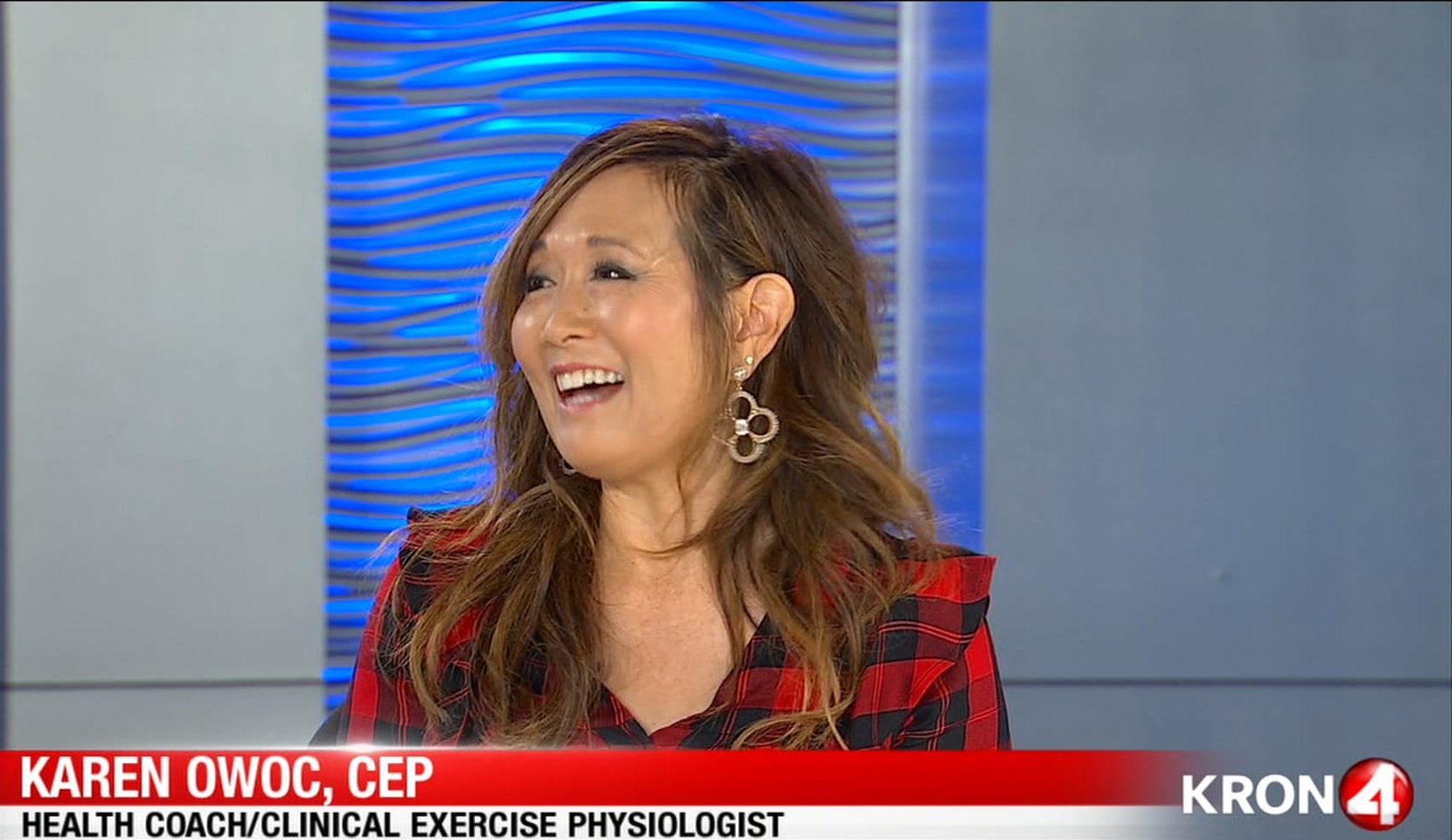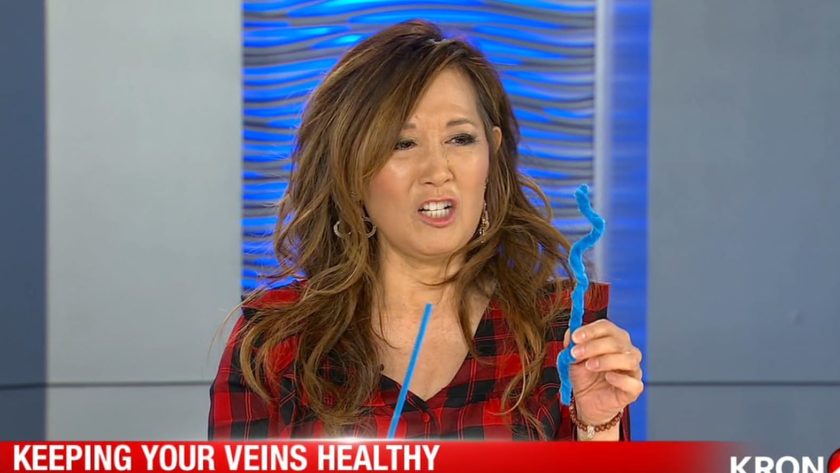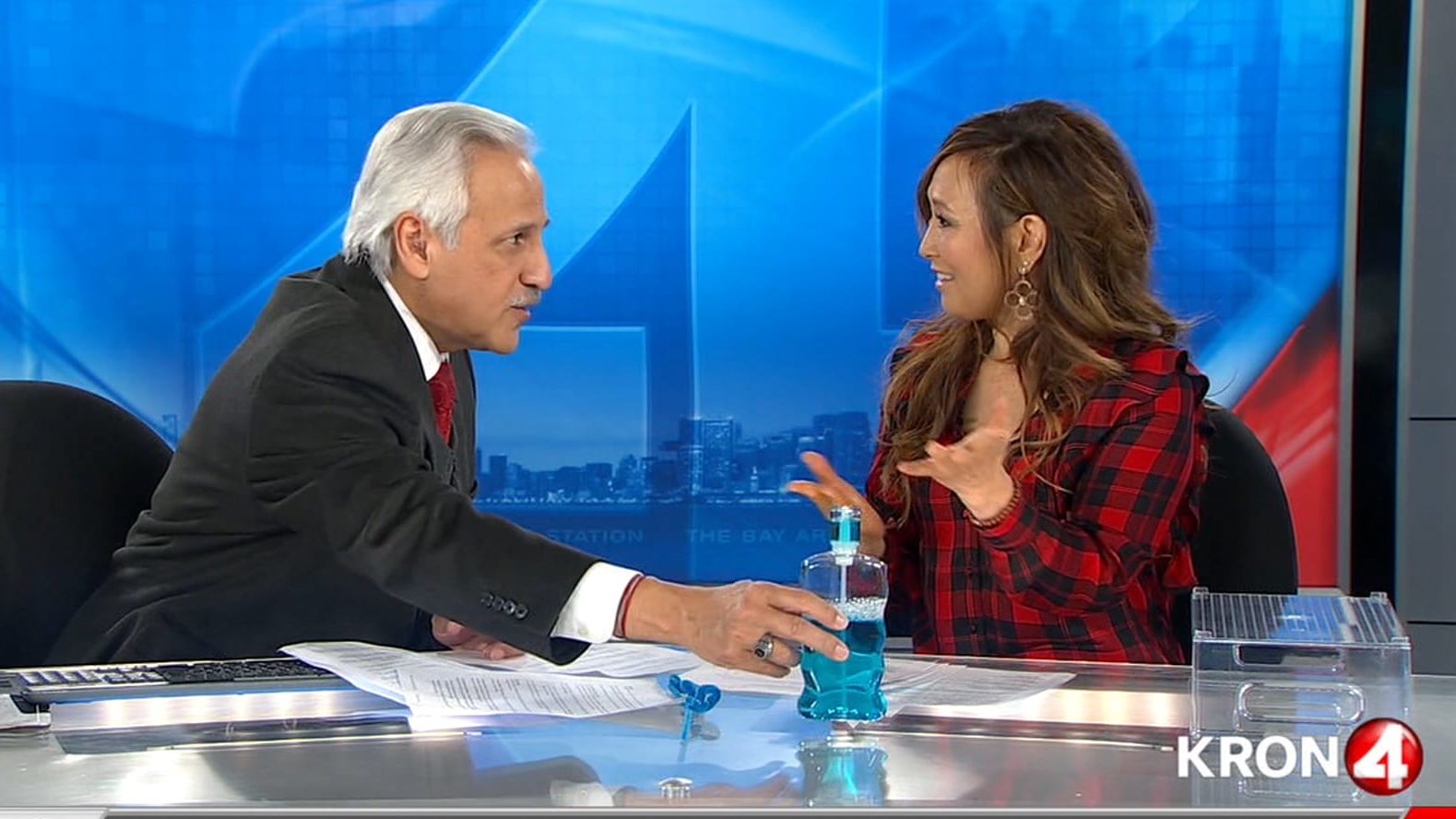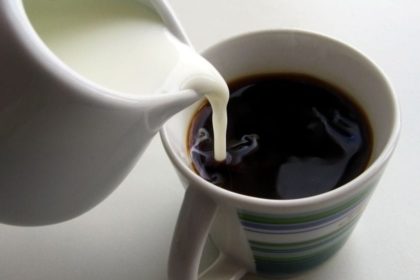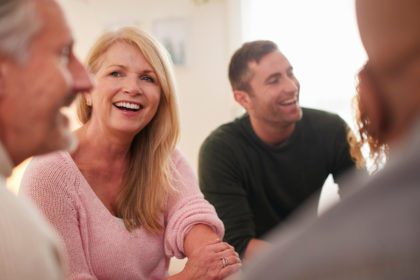Nearly sixty percent of men suffer from varicose veins, so it’s not a common problem for just women and grandmas. Young men are afflicted as well.
Here’s how to keep your veins healthy, strong, and functional.
What are Varicose Veins
Varicose veins are gnarled, enlarged veins, most commonly appearing in the legs and feet, and they are visible under the surface of the skin.
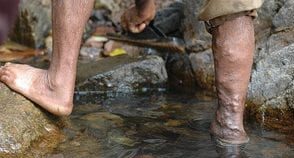
These ballooned veins develop a bluish/brown appearance, but they’re not just a cosmetic concern.
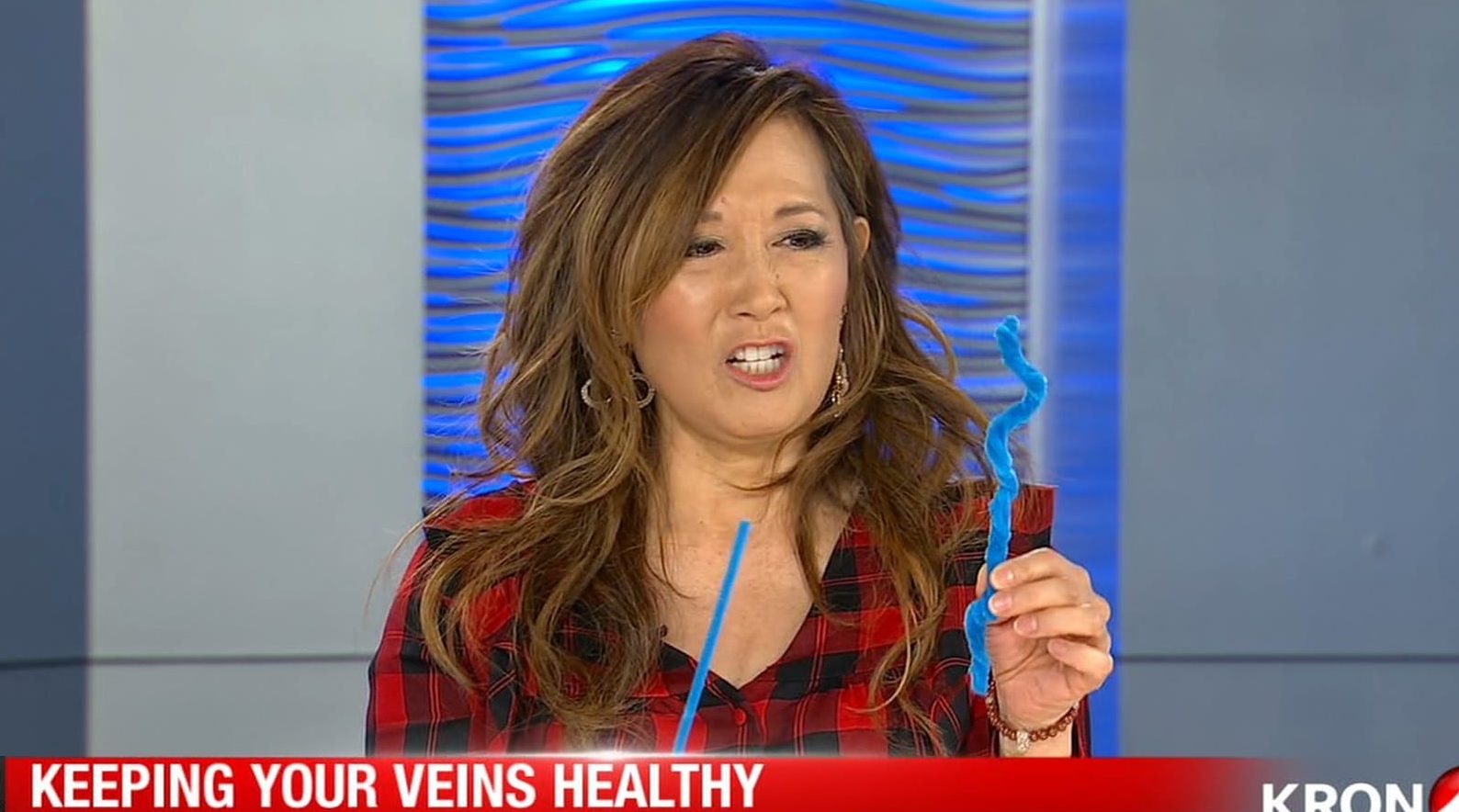
The Cause — It’s All About the Valves!
They occur when the valves in your veins do not work properly. Your blood is supposed to flow in ONE direction thanks to many one-way valves in your veins.
Your veins have to return blood to your heart — that is, your blood has to flow “upstream”. Once it reaches the heart, it is routed to your lungs to reoxygenate.
Faulty valves cause blood to flow back into the vein and then enlarge and swell.
Due to excess pressure on the valves, they get stretched and less elastic (flexible). Depending on the vein, you have 1-13 valves per vein.
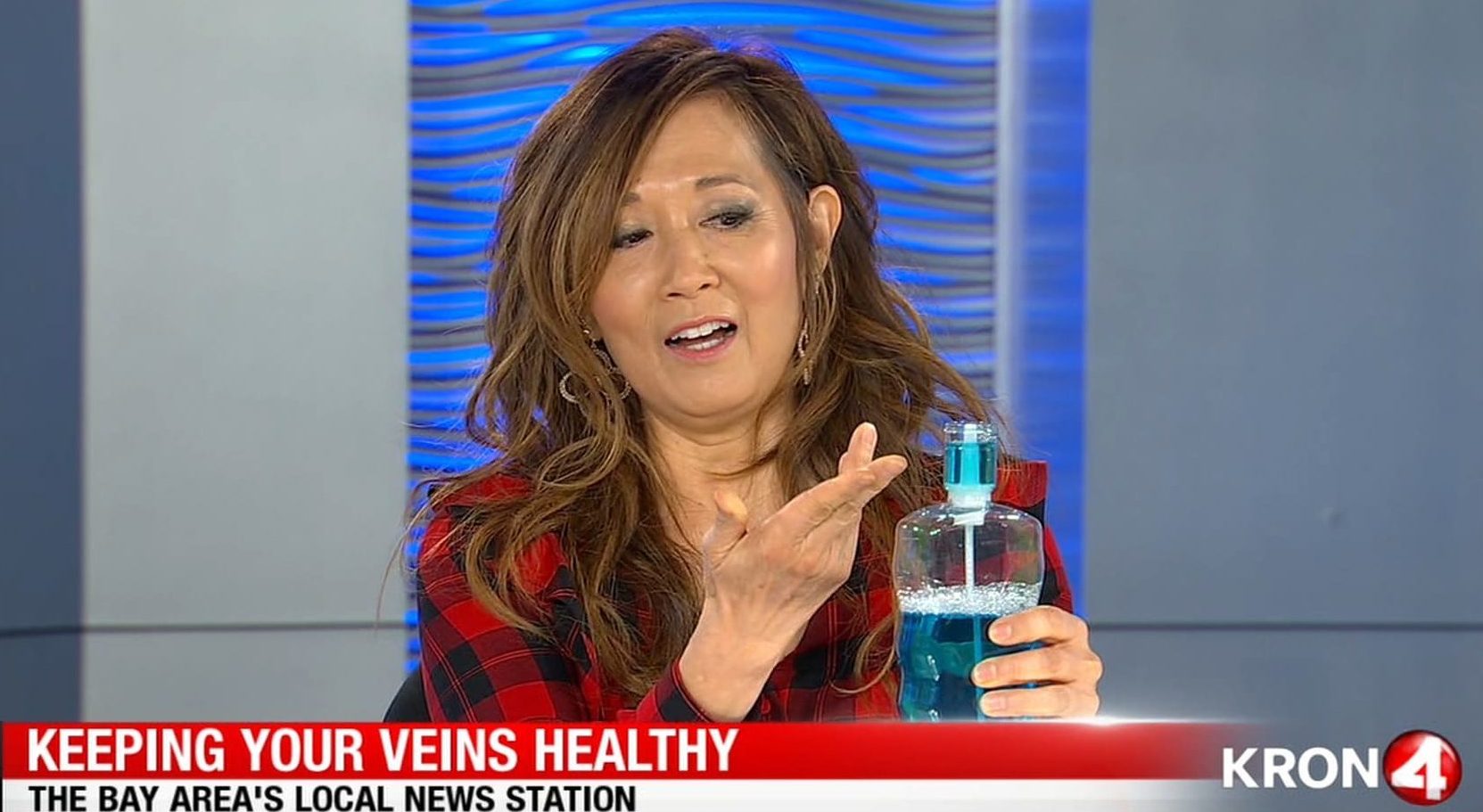

Dangers!
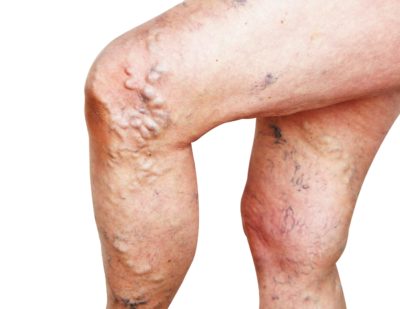 These ballooned, gnarled veins are not just a cosmetic concern.
These ballooned, gnarled veins are not just a cosmetic concern.
These weak bulging vessels can rupture and bleed as well as cause swelling and throbbing (mild to moderate pain) which can cut into your daily activities.
Worse yet, they can cause dangerous blood clots and skin ulcers (sores).
Symptoms
- Aching legs
- Legs feel heavy (especially after exercise or at night)
- Swollen ankles
- Shiny skin discoloration near the varicose veins
- Red, dry, itchy skin
- Leg cramps when suddenly standing up
Risk Factors
- Standing or sitting for long periods
- Family history (if your grandma had them, you may be likely too)
- Pregnancy — More blood in the body places additional pressure on the circulatory system. Also, hormone level changes cause blood vessel walls to relax (open up).
- Overweight
- Over age 50 — Your risk increases with age due to wear and tear on your veins’ valves.

How to Avoid Varicose Veins
To avoid varicose veins, exercise. Exercise keeps your vessels strong which will promote healthy venous return and cardiac output.
Poor cardiac output results in an inadequate delivery of oxygen to your muscles and vital organs.
Be sure your exercise routine involves working out the often neglected, but very important, calf muscles.
Gravity causes blood to pool in your legs which expands the vein walls. Sitting or standing for long periods exaggerates this problem and over time, the veins don’t return to their taut condition.
NOTE: When your calf muscles contract, they actually act as a ‘pump’ and are essential for maintaining blood flow from your legs back up to your heart.
Exercises
Keep the blood vessels in your lower extremities in optimal condition with the following six exercises:
1. Sit and Move: When sitting, point, flex and rotate your feet and also straighten your legs or take a walk.
If you must sit, sit for 20 minutes, stand for 8, and move for 2. See “How to Survive a Sedentary Job”
2. Stand and Move: When standing, sway from side to side, stand on your toes/heels, stand on the ball of only one foot (with or without a dumbbell in each hand), and do knee lifts and standing leg curls.

3. Do Standing Calf Raises: Perform this exercise on a stair to both strengthen and stretch your calf muscles and back of the ankle (Achilles tendon).
- Stand on a stair (always use the bottom stair!) with one hand holding onto the railing and/or wall for support.
- Keep your toes on the edge of a stair and let your heels hang freely off the step (starting position).
- Balance in this position, then slowly lift up onto your toes as high as you can, then slowly lower your heels down as much as your ankle flexibility allows.
- Slowly lift up onto the toes, then lower the heels 10 times for 2-3 sets for a total of 20-30 lifts.
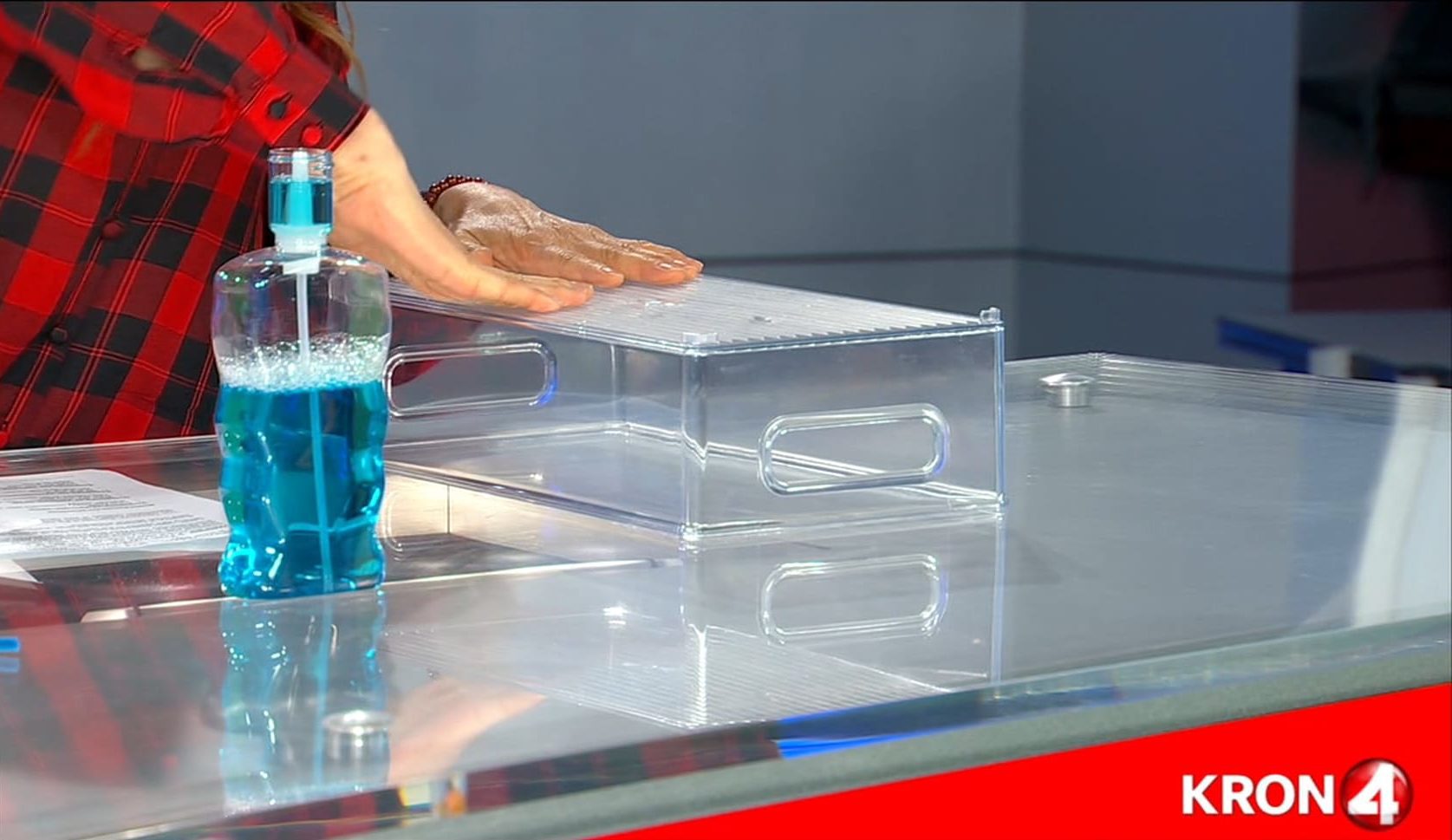
4. Do Seated Calf Raises:
- Sit up straight and tall at the edge of a chair with both feet flat on the floor.
- Hold a dumbbell in each hand and rest on each knee.
- Slowly lift the weight by lifting both heels off the floor while pushing down on the balls of your feet.
- Then lower your heels back to the floor. Repeat 10 times for 2-3 sets for a total of 20-30 lifts.
5. Walk on Your Toes: Stand on your tip toes and slowly walk forward and backwards taking slow small steps. Stand very tall and keep your hands at your side.
6. Walk and Roll: Walk by rolling your weight onto your toes and striking the ground with your heel. If you have poor balance and weak calf muscles, walk alongside a wall or railing for support.
- Take a 10-12 inch step with your right heel on the ground with the toes pointed up.
- Then shift your weight from both feet to just the toes of your right foot as you swing your left foot forward.
- Balance on the toes of your right foot for 2 seconds.
- Then strike the ground with your left heel with toes pointed up. Just as you did with the right foot, rise up on the toes of your left foot for 2 seconds as you swing the right foot forward.
- Repeat this exaggerated stride for 10 steps (5 on each foot). See how many 10-12 inch steps you can take forward, then rest and repeat.
What to Wear

Wear knee-high compression socks if you’re at risk for varicose veins — even if you don’t have them yet.
The tension encourages the blood to flow upwards from the ankle (against gravity) and up your leg.
Also, to reduce all pressure on your valves and veins, elevate your legs or lie down twice a day for 15 minutes.
Treatment
The venous system in your lower legs consists of deep veins and superficial veins.
The deep veins do 90% of the work and are tucked underneath your muscles near your bones.
The superficial veins (which are visible through the skin) do 10% of the work and have MANY pathways to return blood back to the heart.
Varicose vein treatments close off the superficial veins since you have many to take over the work. There are several ways to treat varicose veins, such as:
- Chemical injections: Fortunately, if you already have ballooned veins, there are now pain-free, non-invasive ways to treat them, such as with chemical injections that destroy the damaged vein (schlerotherapy) by scarring and closing them. Eventually they veins fade after a few weeks.
- Laser: Laser treatments can often seal off smaller veins (a.k.a. spider veins). Strong light applied to the vein can cause them to gradually fade and disappear.
- Surgery: If varicose veins are large, these veins may need to be removed surgically under general anesthesia.
NOTE: From the knee up, you have ONE vein that does all the work.
![]() Karen’s Fit Tip: Exercise is the easiest way to avoid varicose veins. Not only will you maintain healthy venous structures, but you’ll strengthen the functional stabilization muscles of your calves and feet.
Karen’s Fit Tip: Exercise is the easiest way to avoid varicose veins. Not only will you maintain healthy venous structures, but you’ll strengthen the functional stabilization muscles of your calves and feet.
Strong stabilization muscles will lessen stress on the tendons and ligaments in your feet and legs. They will help improve your stride when walking, correct pronation (arches of your feet roll inward) and prevent or cure plantar fasciitis and other types of heel/foot pain.
